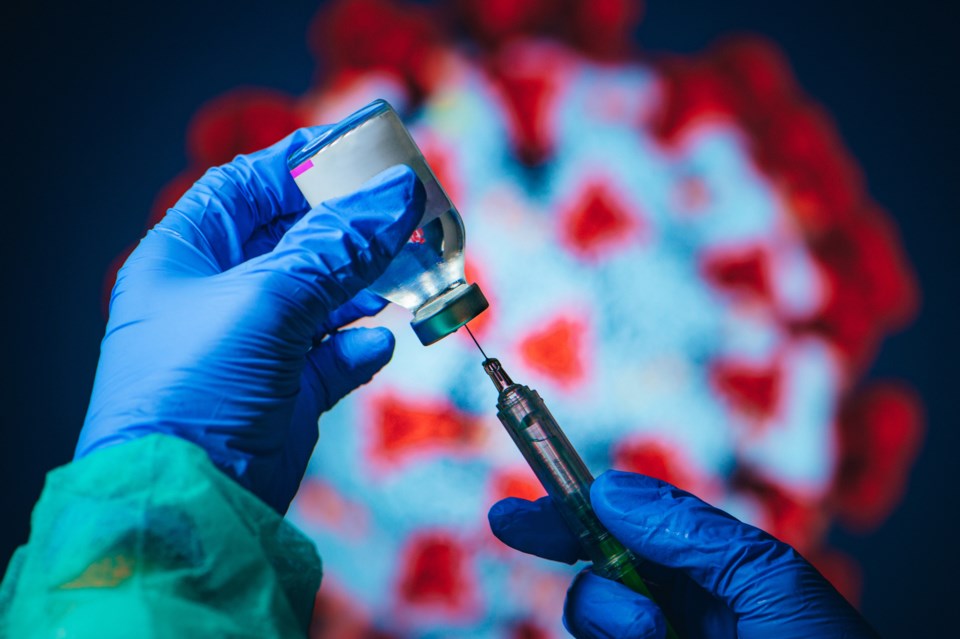We now have a vaccine for COVID-19. God, I love saying that. Christmas came early.
We don’t have it here yet - unless someone’s smuggled it up north, in which case, have your people call my people - but it’s in Manitoba, people have got it and more is coming. I’m gung-ho about it. As soon as I can get it, I’m getting in line and may throw elbows to get up front.
I know some people are worried. This vaccine was approved and distributed barely a year after the virus and disease appeared. People are afraid the vaccine may be dangerous.
I’m not one of them. I’ve researched it. Here’s what I found.
First, I’m only going to be talking about the Pfizer/BioNTech (for brevity’s sake, “Pfizer” from here on out) vaccine. Moderna and other companies have other vaccines, but since Pfizer’s vaccine was the only one in Canada at time of writing, that’s the one we’re talking about. There’s a lot of information here and I don’t have a ton of space, so let’s touch on as much as we can.
The Pfizer vaccine is, according to drug trials, 95 per cent effective. It requires two doses, a first dose and another one about three or four weeks later acting as a booster for the first dose. It was approved for Canada Dec. 9 for people ages 16 and up.
The jab itself is small - about .3 millilitres once treated for use. You could fit just under 1,200 doses in a container the size of a pop can.
There are 10 ingredients in the vaccine - one fewer than the number of ingredients in Colonel Sanders’ secret blend of herbs and spices. That’s straightforward.
We know what they are, too. When Pfizer applied for FDA approval, the company needed to list all the vaccine’s ingredients. That information can be easily found on the FDA website. It’s also right here, but you can doublecheck there if you don’t trust me.
The vaccine contains four types of lipids, sucrose, four types of salts and the active ingredient - the messenger RNA (mRNA) form of the novel coronavirus that makes the whole shebang work. (Note: there are no microchips in it, either. If you’re worried about microchips tracking you at all times, smash your phone, delete Facebook, burn your computer and live in the woods.)
Sounds complicated, right? Maybe a little scary? Nope.
Let’s tackle that mRNA first. Like any vaccine, this one is supposed to mimic a disease and build resistance without harming you. The mRNA contains a sequence that makes cells produce proteins similar to the coronavirus without the negative side effects. The body learns how to deal with these proteins without allowing them to enter cells, learning to do the same to the actual coronavirus if it shows up.
That mRNA is extremely fragile - most of the rest of the vaccine either protects it or keeps it viable in the body. The vaccine also needs to be shipped in those super-cold freezers to protect the mRNA.
Even with that extreme cold, it’s hard to keep that mRNA viable. That’s where the lipids come in. They’re used to encase the mRNA, protecting it from breaking down.
The four salts - including common table salt - are used to keep the rest of the mix at the right pH. If the vaccine is the wrong pH, it could either not work as well as intended or not at all. The salts are not like putting salt on an open wound - here, they’re a safety measure.
The sucrose - yep, plain ol’ sugar - is meant to protect everything else when it’s frozen.
The whole recipe is mixed with a saline solution - water with salt - before it’s injected. Most medications that you get from a shot are like this.
The vaccine’s rollout so far appears to be good. When I wrote this, about 500,000 people have received it. In some early cases, allergic reactions have been reported - in 350,000 doses done in the U.K., there were two recorded cases. It’s possible that one of the lipids, which contains polyethylene glycol - which is in skin cream, toothpaste, laxatives and even personal lube - could be responsible, but we don’t know yet. Anyone who is extremely sensitive to allergies - like people who carry an EpiPen, for instance - is supposed to consider this before getting the jab.
The fact we have a vaccine that is more than 90 per cent effective at killing a disease that we only learned existed a year ago is staggering. It wasn’t a rush job - it was because every single obstacle that’s usually in the way of getting a drug approved was eliminated. There were no waits for funding. There were years of scientific research into similar viruses to draw on, like the viruses that cause SARS or MERS. Drug companies were able to run multiple trials at once and regulators responded quickly. Laboratories and researchers were able to share their findings worldwide faster than ever.
This may be one of the greatest scientific triumphs in our lives. Trials and early results have shown the vaccine is safe.
People here used to breathe in smelter smoke at all hours of the day. That air was a hundred times more dangerous than anything in the shot and we still played outside. This is nothing.
Now, let’s kill this damned plague.
Information in this column was sourced from the MIT Technology Review, the National Advisory Committee on Immunization, Nature, the New England Journal of Medicine, the U.S. FDA, the Canadian Press, the Government of Manitoba, the Regulatory Affairs Professionals Society, the World Health Organization, Our World in Data, Reuters and the Mayo Clinic.




